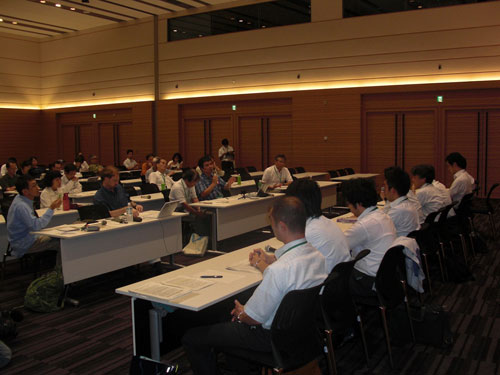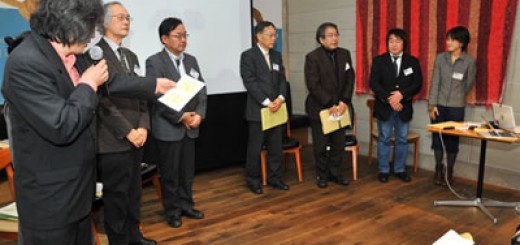Group Introduction Japan Occupational Safety and Health Resource Center (JOSHRC) Nuke Info Tokyo No. 148
By Iida Katsuyasu*
 |
| JOSHRC and citizens’ groups negotiating with the government regarding the worker radiation exposure problem at Fukushima Daiichi Nuclear Power Station. |
The Japan Occupational Safety and Health Resource Center (JOSHRC), which exists to protect the health and lives of workers, is an NGO network established for the sake of eradicating occupational diseases.
Until now, our friends in the network have handled the occupational problems of nuclear plant workers. Since 1976, however, there have been only ten examples of recognized cases of work-related cancer among nuclear plant workers. Nuclear plant workers suffering health damage from radiation continues to be an issue shrouded in darkness.
Since the 3/11 Fukushima Nuclear Accident occurred, TEPCO’s sloppy radiation countermeasures have resulted in the appearance of a series of highly irradiated workers. Directly after the accident, the government raised radiation exposure limits from 100 mSv to 250 mSv for emergency work employees as a special exception to the regulation regarding the prevention of ionizing radiation disorders. In addition, the government also took measures to loosen the annual 50 mSv limit for workers active at some distance away from the emergency work.
Was it acceptable to simply relax worker radiation exposure regulatory limits in the name of emergency work? We believe the worker radiation exposure is a problem that can no longer be overlooked, and from May last year we began negotiations with the government. Originating with CNIC, citizens’ groups as well as labor unions have called on the government to engage in negotiations seven times since March of this year. Through utilization of the freedom of information system we have also sought to elucidate the process by which the radiation exposure limits were raised within the government. These efforts have revealed that the nuclear-power promoting Nuclear and Industrial Safety Agency (NISA), fearing impediments for Japan’s nuclear operations, made a special case for the Fukushima Daiichi Nuclear Power Station’s emergency worker radiation exposure limits, and changed the lifetime limit to 1 Sievert.
Meanwhile, the Tokyo Occupational Safety and Health Center is holding seminars together with the NGO Toxic Watch Network (T-Watch), and we are studying the nuclear accident and the effects of radiation. T-Watch is measuring the radiation in food, water, and soil with an NaI scintillation detector.
Last summer, in cooperation with T-Watch, we investigated radiation in Tokyo’s sewage treatment and water purification facilities, and proposed risk evaluations and countermeasures for worker radiation exposure. In April, we held a gathering in Tokyo to create an activist network for considering the problems of worker radiation exposure.
We will continue to tackle the problems of radiation spread through communities and workplaces, and by developing campaign movements and negotiations with the government, we would like to work towards a change in the government and industry’s position of radiation neglect.

